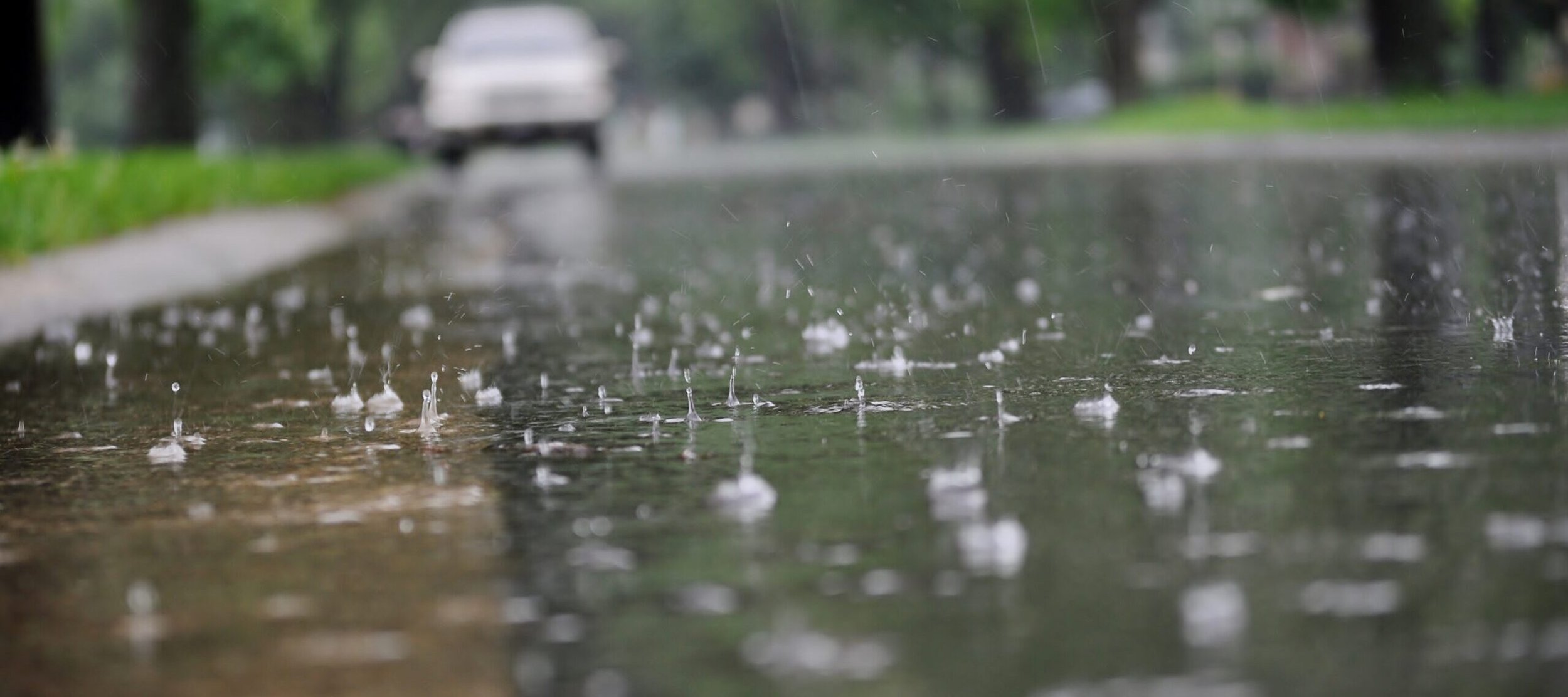
Rain Ready
People caring for their homes can unknowingly impact local waterways through common household practices, materials, stockpiles, debris, chemicals, paint, and trash. Materials swept, raked, stored, dropped, thrown, or spilled on the ground or pavement can be carried by rain, residential water, or wind into our local creeks, which can be harmful to water quality and creek habitats. Accumulation. of any material in local waterways can impair water quality, wildlife habitat, recreation and flood capacity.
A good rule to remember is "Only rain down the storm drain."
How are the Storm Drain and Sanitary Sewer Systems Different?
The storm drain system transports rainwater to local creeks, rivers, and the ocean. This system was created to prevent flooding within communities and homes.
All water and materials that enter the storm drain system are untreated.
The sanitary sewer is a plumbed system that transports used water from buildings to a wastewater collection and treatment facility, where the water and sewage is treated.
If you see an outdoor drain and are unsure of its use, assume it is a storm drain and do not discharge wash water to it.
Clean creeks are important. They provide vital fish habitat, recreation, and add to the beauty of our city.
What to Know
Common storm water pollutants include cigarette butts, litter, oil and grease from cars, paint, fertilizers, pesticides, lawn clippings and leaves, pet waste, soapy water, sediment, and construction materials.
For every one inch of rain, 600 gallons of water can runoff or be collected from 1,000 square feet of roof area.
Be Prepared
Identify vulnerable areas on your property.
Use erosion control techniques, such as installing wattles and rock bags and clearing debris from drainages to reduce flooding.
Rain Ready Solutions
Pick up pet waste daily.
Pick up leaf litter and yard clippings around your home.
Securely cover all stockpiles, garden products, gas-powered garden equipment, or chemicals stored outside.
Minimize use of pesticides, herbicides, and fertilizers. Avoid application if rain or high wind is forecasted.
Turn down irrigation system run times during dry fall months and turn off once the rains begin.
Repair vehicle and equipment leaks.
Use a commercial car wash, which recycles water and keeps soap out of the storm drain.
Clean pickup truck bed and secure any items transported in bed of truck.
Routinely sweep up the street gutter in front of your residence.
Dispose of motor oil, antifreeze, paint, paint thinner, batteries, chemical cleaning products, and other hazardous materials at the Household Toxics Facility. Call the Eco-Desk at (707) 565-3375 for more information.
Street Sweeping
City street sweepers and trash services are unable to pick up any leaf piles.
City street sweepers clean each street once a month.
Check with your local municipality for schedules.
Avoid street parking on sweep day.
Property Owner Responsibility
Install and maintain erosion control measures on vacant lots (including sidewalk planters) and construction sites.
Proper installation, periodic inspection, and maintenance are critical to keeping our storm water clean.
Releasing pollutants into the storm drain system or a waterway is prohibited by local ordinance, state, and federal law.
For an emergency or a spill involving hazardous materials or hazardous waste call 911 or your local Fire Department.
For All Non-Emergency / Non-Hazardous Spills
To report a Non-Hazardous spill, or for other useful phone numbers, see Spill Numbers informational reference sheet for your local agency contact information or visit: www.streetstocreeks.org/spill-numbers/.
Protect
Consider installing permanent features that use or mimic natural processes that result in the infiltration, evapotranspiration or use of stormwater in order to protect water quality and associated aquatic habitat.
Rain Barrels / Rainwater Harvesting
Collects rain runoff from the roof.
Water can be stored for later use or held and released slowly back into ground.
Rain Garden
A shallow basin with native plants that have deep roots and are water-tolerant.
Allows stormwater to soak directly into the ground.
Detention Basin
Captures a large amount of rainwater and releases it slowly into the ground and drainage system.
Stormwater Planter Box
Captures water from a roof.
Water is filtered through layers of mulch, soil, rock, and plants before it soaks into the ground.
Infiltration Trench
Directs stormwater along a path, usually away from a building.
A long, shallow trench filled with draining rock or crushed stone.
Cleans and filters the water while allowing it to soak into the ground.
Pervious Pavers
Allows water to flow through the joints between individual pavers.
Solid interlocking paving units made of fired clay or concrete.
Plant Trees
Reduces rain runoff by absorbing water.
